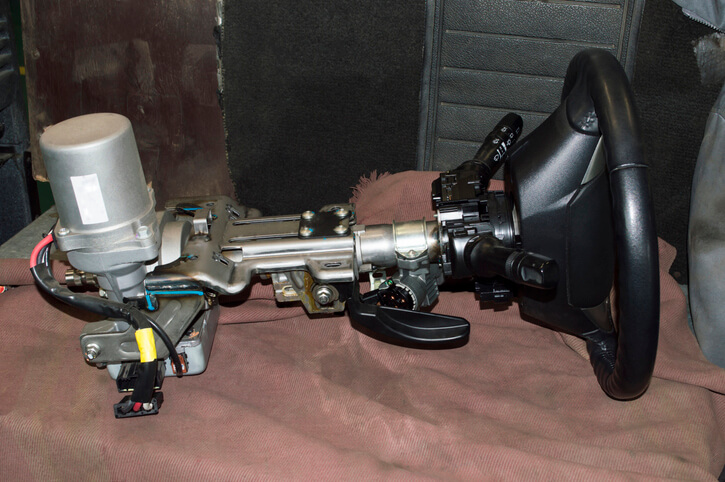Electric vs. Hydraulic Power Steering: Adapting to New Steering Systems
Steering systems have undergone significant changes in recent decades, shifting from traditional hydraulic setups to more modern electric power steering (EPS). For aspiring mechanics, understanding these differences is more than just an interesting technical detail. It’s essential for success in today’s auto mechanic training programs.
During training, you’ll learn how to service, diagnose, and repair both systems, ensuring you’re ready for the wide variety of vehicles you’ll encounter in the shop.
How Hydraulic Power Steering Works
Hydraulic power steering has been a mainstay in vehicles for decades. It uses a pump, driven by the engine via a belt, to circulate pressurized fluid to a steering gear. This pressurized fluid assists the driver by reducing the effort required to turn the wheel.
Hydraulic systems are known for their smooth, natural steering feel. However, they come with drawbacks, including fluid leaks, worn hoses, and pumps that can fail over time. Servicing these systems often involves fluid flushes, pump replacements, and leak repairs.
How Electric Power Steering (EPS) Works
Electric power steering eliminates hydraulic fluid and pumps entirely, instead using an electric motor to provide steering assistance. Sensors detect the driver’s input and send signals to the motor, which applies the necessary torque to the steering mechanism.
EPS offers several advantages over hydraulic systems, such as reduced weight, lower maintenance requirements, and improved fuel efficiency because it only uses power when steering input is required. As explored in auto mechanic training, many modern vehicles now rely exclusively on EPS due to its precision and adaptability.

Key Differences Between the Two Systems
While both systems aim to make steering easier and more responsive, their differences are significant:
Hydraulic power steering uses mechanical and fluid-driven components, which can wear down and require replacement. EPS, on the other hand, relies heavily on electronic components and sensors, making diagnostics more focused on electrical testing rather than fluid mechanics.
Hydraulic systems typically require more regular maintenance, such as checking and replacing fluid, while EPS systems require software updates or sensor recalibration in some cases.
What This Means for Auto Mechanic Training Students
As a student in automotive training, you’ll need to be skilled in both traditional and modern steering technologies. In the shop, you might repair an older hydraulic system in the morning and troubleshoot an EPS fault in a newer model that afternoon.
This versatility not only makes you a valuable hire but also ensures you’re equipped to handle the ongoing evolution of vehicle technology. Training covers:
- Fluid inspection and replacement for hydraulic systems
- Electrical diagnostics for EPS components
- Steering angle sensor calibration
- Safety protocols for handling electronic systems

The Future of Steering Systems
The industry trend points toward wider adoption of EPS, especially with the rise of electric and hybrid vehicles. Some systems even integrate advanced driver assistance features like lane-keeping assistance, which rely on EPS for quick and precise steering adjustments.
Still, hydraulic systems aren’t going away overnight. Many heavy-duty vehicles and trucks continue to use them for their durability and performance in demanding conditions.
Start Your Auto Mechanic Career With Steering System Expertise
Mastering both hydraulic and electric steering systems will set you apart as a capable, adaptable technician. ATC Surrey’s auto mechanic training program provides hands-on experience with a wide range of systems, preparing you to work confidently in any automotive repair environment.
Are you ready to become a mechanic?
Contact ATC Surrey for more information.


